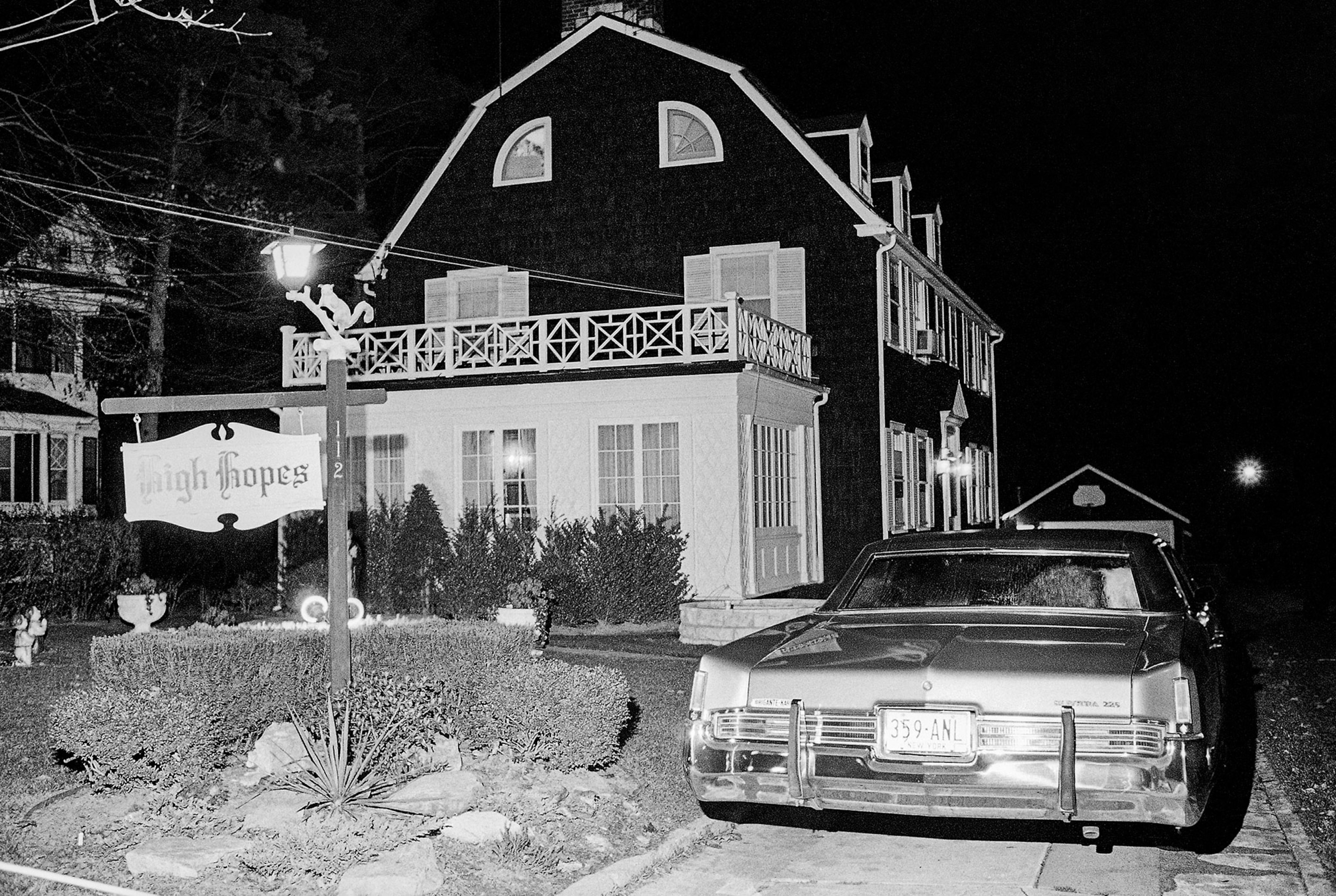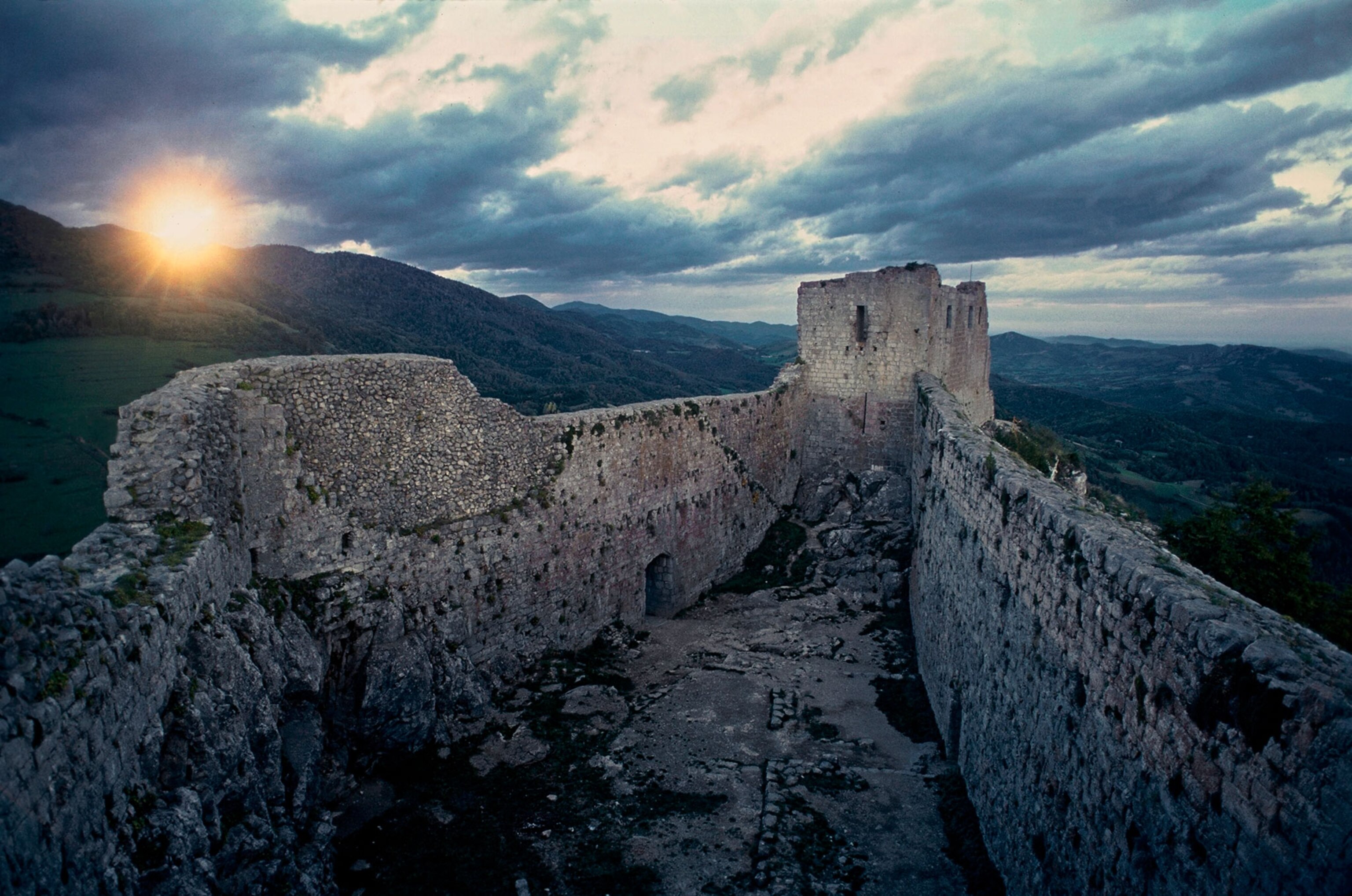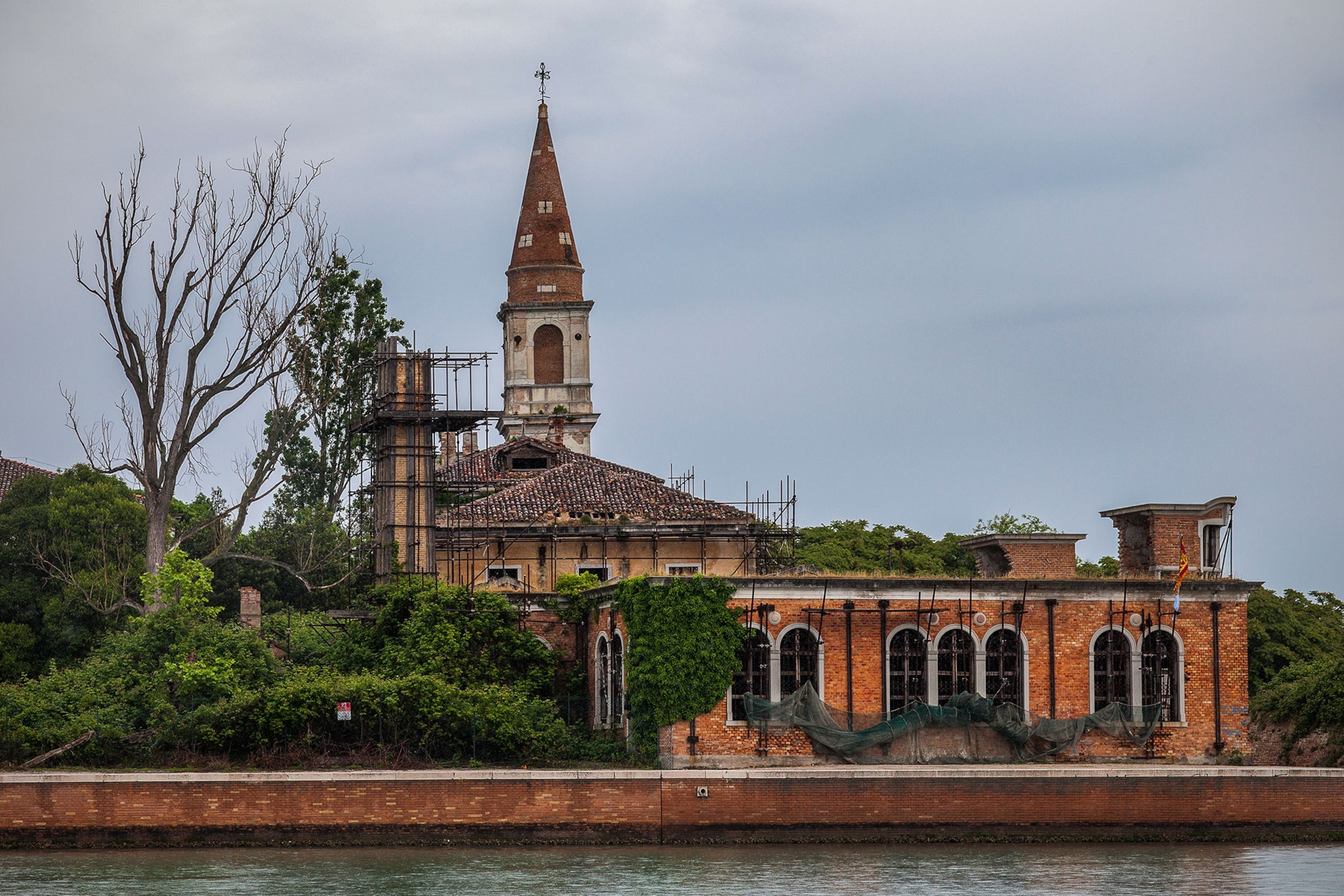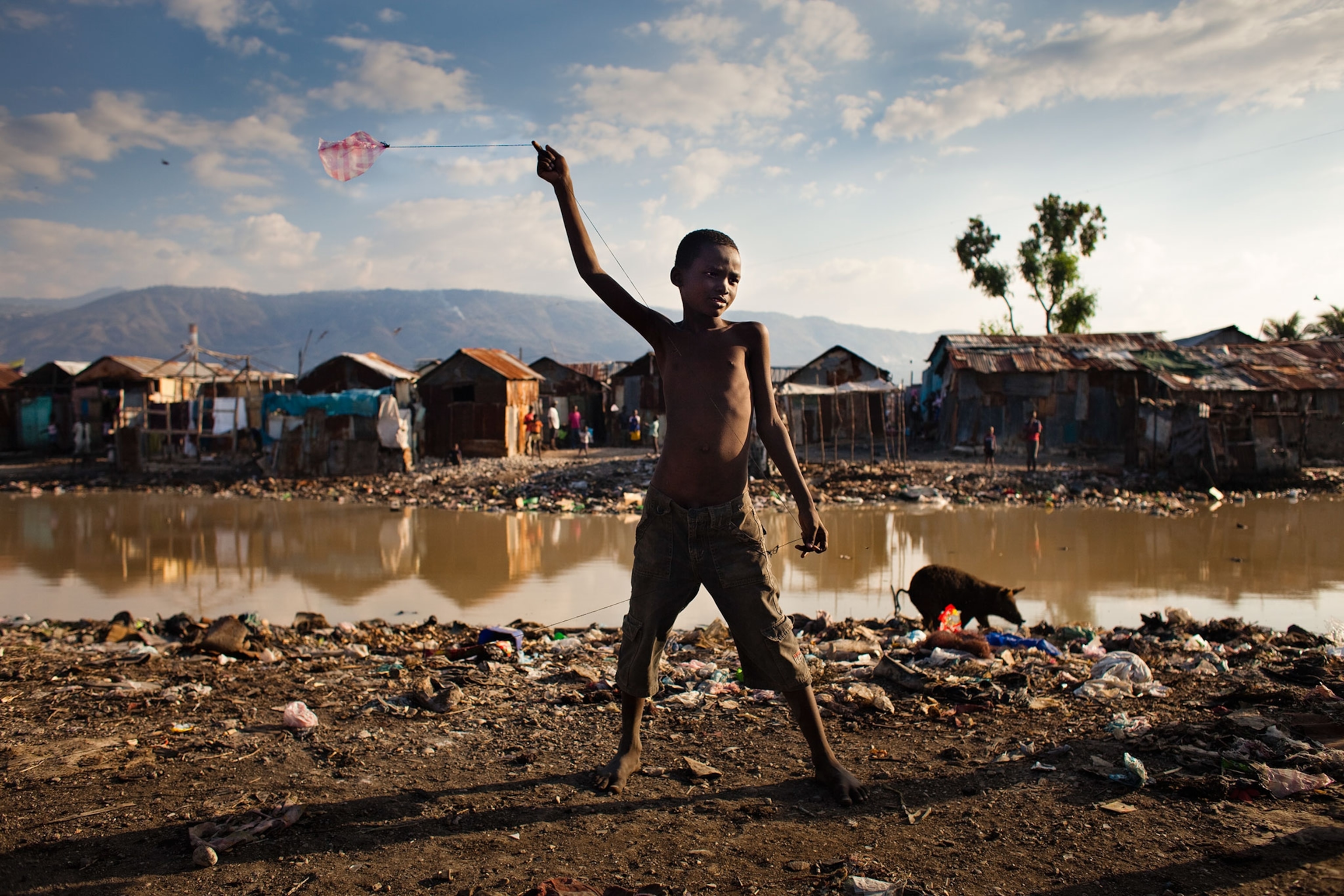
Cursed: Take A Journey to the Scary Side of Geography
From the Bermuda Triangle to Amityville, the world is full of spooky places. This author went to 30 of the most frightening ones. And returned to tell the tale.
Most of us avoid frightening or unpleasant places when we travel. But when Olivier Le Carrer found himself caught in a storm on board a sailing ship in the Bermuda Triangle, his interest in the dark side of geography was aroused. In Atlas of Cursed Places: A Travel Guide To Dangerous And Frightful Destinations, he takes us on a tour of some of the world’s most benighted places, from the Gaza Strip to a giant garbage dump in the Maldive Islands and Amityville’s House of Horrors.
Writing by email from his home in Paris, he describes what constitutes a cursed place; how buried under a suburb in Tunis is a place where thousands of children were slaughtered; and why he calls a Russian naval base in the Arctic “ the antechamber of hell.”
Most writers explore enticing and beautiful places. Why did you decide to write a book about horrible ones? Perversity? Masochism?
Neither! The idea of writing a book on cursed places came to me when sailing in the Bermuda Triangle. The first time I crossed it, was during a sailing race from Florida to the Bahamas. I was 19. Horrendous storms plagued me all night—the sky was constantly lit up by lightning, there was deafening thunder with gusts of winds assaulting me on all sides. Having heard so much about the mystery of this area I had to agree. It really was strange here.
Since then, I have sailed on a regular basis in the area. I’ve come to realize that storms in the Bermuda Triangle are basically no worse than elsewhere. However, I wanted to understand the facts behind the stories of disappearing planes and ships. After researching and reading as many records as I could find, I was struck by the mismatch between the reputation of the area and the reality. This led to my desire to investigate other places to see how these legends arose and what truth there is in them.
You break down cursed places into three categories. What are they?
When talking about a curse, we often think about places tormented by mystical or paranormal issues. However in many places, the challenge is a physically hostile environment. In others, human activity creates the problem. The worst case is when two factors—or even three—combine to make it a truly awful place.
This is true of the poor suburbs of Haiti, especially the notorious “Cité Soleil.” Not only is this region subject to the natural curse of hurricanes and earthquakes, which kill people and destroy entire infrastructures. Its strife is exacerbated by political instability, corruption, and crime. This spiralling disorder makes it hard to see how the country can ever find a way out.
To take a very different example: on the surface, Beirut appears to provide a perfect environment in which to live well—it has a favorable climate, fertile land, no shortage of water, and the country is ideally situated on the edge of the Mediterranean for trade and tourism. But the country’s heritage weighs so heavily on daily life and is aggravated by rivalries of such complexity that nothing seems to function normally.
When walking in Beirut I’ve always been astounded by this turmoil. It’s the only city I know where, in peacetime, you meets all sorts of groups with guns and it is hard to tell whether they are soldiers or militia.
You are a sailor as well as a writer. Tell us about some of your sailing trips in search of awful places.
One of my most vivid memories is sailing up the Australian coast as far as Cape York, an incredible journey along the Great Barrier Reef. On reaching the far north it’s beautiful but frightening. You hesitate to go for a swim anywhere because of the deadly sharks and “salty” crocodiles.
The advantage of the boat is that it gives you a different perspective compared to traveling on land. For example, when I was sailing around the Canaries, I became aware of the impressive size of the Cumbre Vieja volcano. It was easier to see the potential threat that an earthquake could pose there.

You start the book with the Chateau of Montsegur, in France. Tell us why it became known as “Satan’s synagogue.”
The Chateau of Montsegur is near the town of Foix in the French Pyrenees. In the mid 13th century it provided refuge for survivors of Catharism. These were followers of a Christian religious movement that the Catholic authorities at the time sought to wipe out with the help of the king of France. Cathars were accused of being in league the devil and of engaging in heretical rituals, hence the castle’s nickname. In fact the Cathars had a very austere vision of Christianity. They lived as ascetics and refused to do the slightest harm to anyone, so they were called “perfects.”
When royal troops stormed the castle in 1244, the 200 Cathars within had a choice between converting to Catholicism or dying. They refused to recant. All of them, men and women, were led to the stake one Sunday in March, on the day of the equinox. Vowing to remain courageous and pure, they continued to chant their songs of praise right up to the moment they were burned alive.
Every time I come here I feel especially moved by the beauty of the place, the memory of what happened here, and the mysteries that are still unanswered: Why does the castle’s architecture seems to reflect the movement of the stars? Where is the Cathar treasure, which was supposedly hidden just before the massacre? Will the Cathars return one day, as predicted? It is a magical site!
Tophet is a word most of us are not familiar with. Tell us about Carthage’s murdered children.
A huge cemetery is hidden beneath a residential suburb in the capital of Tunisia. This is all that remains of Carthage’s Tophet, where tens of thousands of children were once burned to appease the gods of Baal and Tanit.
The word tophet can mean both “hell” or “place of sacrifice.” It is not specific to this place. But while it has been used in other areas where human sacrifice was practiced, this is assuredly the most distressing instance because of the extent of the carnage.
In order to attract “favorable graces” from the gods, each family had to sacrifice its first-born child. Rich families were said to have adopted a slave child to spare killing their legitimate heir.
This appalling practice persisted for several centuries, with a new layer of funerary urns added whenever they ran out of space. Some say that this practice caused a curse over the city. The Romans finally destroyed Carthage in the second century B.C., slaughtering the entire population.

Venice is celebrated for its beauty. But you managed to find a dark corner of the Serenissima. What is cursed about Poveglia?
Venice is splendid. The light on the islands and marshes is magnificent. But it is also a place brimming with dark corners.
You May Also Like
In the 14th century, the Black Death wreaked havoc in Europe. More than a third of the population died during the epidemic. This tiny island close to the Lido is reputedly haunted by the souls of thousands of exiled plague victims who were supposedly buried here.
As in many other places, the official record is somewhat different. Contrary to legend, there is no evidence that the island is home to a secret cemetery containing 160,000 bodies. But that doesn’t stop the story from continuing to be told.

You write, “Even in paradise someone has to take out the trash.” Tell us about Thilafushi, in the Maldives.
For millions of tourists, the Maldives is the image of paradise itself, with idyllic islands dotting the limpid, turquoise sea. But they often only see the luxurious hotel islands, which are a long way from Malé, the capital.
If you linger in a boat near this city, you’ll find a dreadful atoll, with clouds of smoke billowing out. This is Thilafushi, the dumping ground where they pile all the archipelago’s trash. It’s an ecological time bomb because the 800,000 annual visitors produce more trash than the place can handle. But no one seems to know what else to do with paradise’s garbage.
You call Gaza “a universal symbol of apparently incurable adversity.” But it wasn’t always like that, was it?
Today, the Gaza Strip is more or less in a state of quarantine and violence. It is practically impossible to live normally. As hard as it is to imagine, 2,000 years ago, Gaza was world renowned as a prosperous place, an important crossroads for Mediterranean trade, and a very rich city with beautiful buildings and great culture. At that time, Gaza had more influence than Jerusalem. They even produced wine renowned throughout the Middle East.
Describe your trip to “The antechamber of hell.”
We were sailing from the south of Norway towards the waters of the Arctic Circle, going round the famous North Cape, the northernmost point of the European continent. Originally, I hadn’t thought about visiting the Russian naval base of Zapadnaya Litsa, where many nuclear submarines filled with an incredible quantity of potentially dangerous radioactive material have been essentially abandoned. On the way, we hoped to be able to continue around the Kola Peninsula to reach our destination.
What really happened at Amityville is unclear. The new owners of the house claim not to have been bothered … except by the hordes of day-trippers who come to see the “house of the devil.”
But it would have meant asking permission several months in advance, since the Russian administration is incredibly persnickety. So we had to stop at Kirkenes, just before the Russian border. As a result, this is one of the few cursed places in the book I wasn’t able to reach. However a friend, a local journalist, was very familiar with the place and described it to me in minute detail.
Amityville, on Long Island, has become a byword for horror. Why?
The place became world famous in 1977 after the publication of the book by Jay Anson, The Amityville Horror, and even more so two years later when the film was released. Both recounted the disturbing experience of the Lutz family, who bought the house where Ronald DeFeo shot and killed six members of his family. Soon after moving in, the Lutz family experienced a waking nightmare. The place seemed to be peopled by malevolent spirits that persecuted the entire family day and night until they were so terrified they abandoned the house.
What really happened at Amityville is unclear. The new owners of the house claim not to have been bothered … except by the hordes of day-trippers who come to see the “house of the devil.”

You visited 30 cursed places. Which was the most memorably frightful?
The Nevada Triangle in the United States, where I hiked several times, impressed me most. While I’m not especially drawn to stories of UFO and aircraft disappearances, I was truly amazed by the power of nature you can feel in this area—it is both magnificent and oppressive. The forest and the mountain seem so impenetrable that I felt if I got lost, no one would ever find me.
I am also very moved by the mystery of the Scottish Eilean Mor’s lighthouse where three guards vanished and left nothing behind but a completely incoherent logbook. More than a hundred years later, no one has found an explanation for their disappearance.
This interview was translated from the French.
Simon Worrall curates Book Talk. Follow him on Twitter or at simonworrallauthor.com.

